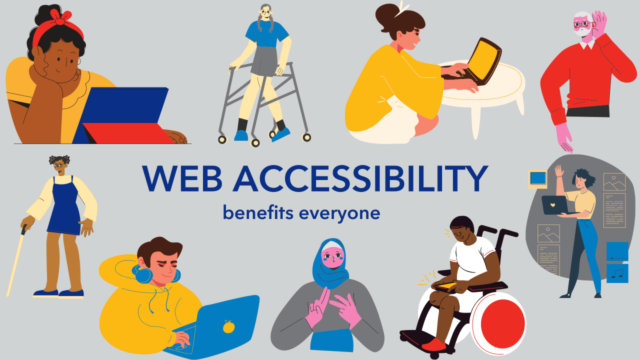In today’s digital world, accessibility is a crucial aspect of web development. Creating a website that is accessible to all users, including those with disabilities, not only ensures compliance with legal standards but also enhances the user experience and broadens your audience. This blog will explore the principles of web accessibility and provide actionable steps to help you create an inclusive website.

Why Accessibility Matters
Creating an accessible website is essential for several reasons:
- Inclusivity: Over a billion people worldwide live with some form of disability. Ensuring your website is accessible allows these individuals to engage with your content.
- Legal Compliance: Many countries have laws and regulations requiring digital accessibility, such as the Americans with Disabilities Act (ADA) in the United States. Non-compliance can lead to legal consequences.
- Improved User Experience: Accessible websites often provide a better user experience for everyone, including older adults and users on mobile devices.
- SEO Benefits: Accessibility features often align with SEO best practices, making your website more visible in search engine results.
Key Principles of Web Accessibility
The Web Content Accessibility Guidelines (WCAG) provide a framework for creating accessible web content. Here are the four key principles:
- Perceivable: Information must be presented in ways that users can perceive. This includes providing text alternatives for non-text content, such as images and videos.
- Operable: Users must be able to navigate and interact with the website. This involves ensuring that all interactive elements are keyboard accessible and that users can easily navigate through the site.
- Understandable: The content and interface must be easy to understand. This includes using clear language, consistent navigation, and providing instructions when necessary.
- Robust: Content must be compatible with current and future user agents, including assistive technologies like screen readers.
Steps to Create an Accessible Website
1. Use Semantic HTML
Using semantic HTML elements helps screen readers understand the structure and content of your website.
- Headings: Use heading tags (H1, H2, H3) to create a clear hierarchy of information.
- Lists: Use
<ul>or<ol>for lists to convey relationships between items. - Landmark Roles: Use ARIA roles (Accessible Rich Internet Applications) to define sections of your webpage, making navigation easier for assistive technology users.
2. Provide Text Alternatives
All non-text content should have a text alternative.
- Images: Use
altattributes for images to describe their content. Be descriptive but concise. - Videos: Provide captions and transcripts for video content to accommodate deaf or hard-of-hearing users.
3. Ensure Color Contrast
Color contrast is crucial for users with visual impairments.
- Contrast Ratios: Use tools like WebAIM’s Contrast Checker to ensure that text has sufficient contrast against its background. Aim for a minimum ratio of 4.5:1 for normal text and 3:1 for large text.
4. Make Navigation Easy
Ensure that users can easily navigate your website using both keyboard and mouse.
- Keyboard Navigation: All interactive elements (links, buttons, forms) should be accessible via keyboard. Users should be able to tab through the content in a logical order.
- Skip Links: Provide “skip to content” links that allow users to bypass repetitive navigation links.
5. Use Clear and Consistent Language
The language used on your website should be simple and straightforward.
- Plain Language: Use simple words and phrases to ensure your content is easy to read and understand.
- Consistent Navigation: Keep navigation menus consistent across all pages to help users build familiarity with your site.
6. Test for Accessibility
Regular testing is essential to ensure your website meets accessibility standards.
- Automated Testing Tools: Use tools like WAVE, axe, or Lighthouse to identify accessibility issues in your site.
- User Testing: Involve users with disabilities in the testing process to gather valuable feedback and insights.
7. Stay Updated on Accessibility Standards
Web accessibility standards evolve, so staying informed is crucial.
- WCAG Updates: Regularly check for updates to the WCAG and incorporate new guidelines into your web development practices.
- Training and Resources: Invest in training for your team to ensure they understand accessibility principles and best practices.
Conclusion
Creating an accessible website is a vital step in ensuring that all users, regardless of their abilities, can access and engage with your content. By following the principles of web accessibility and implementing the steps outlined in this blog, you can build a more inclusive online presence.


No responses yet